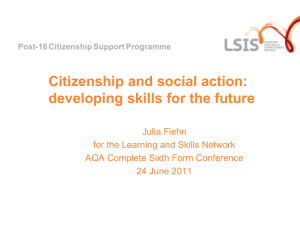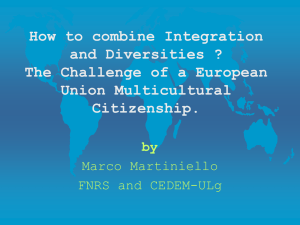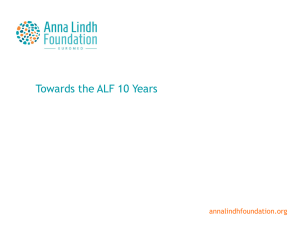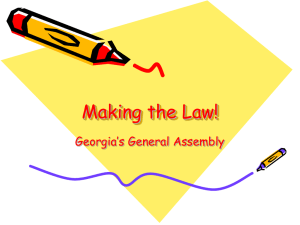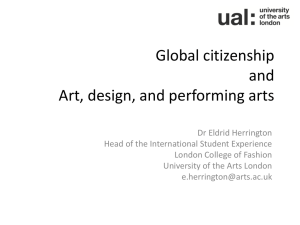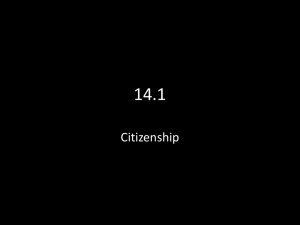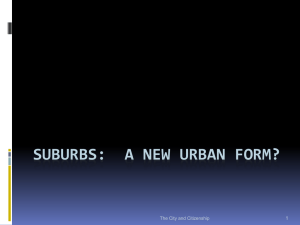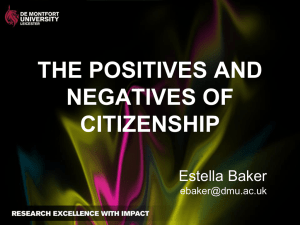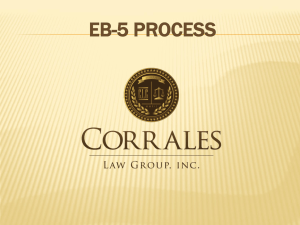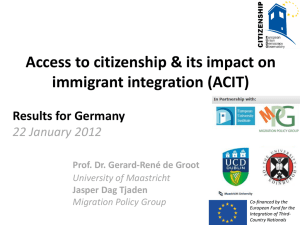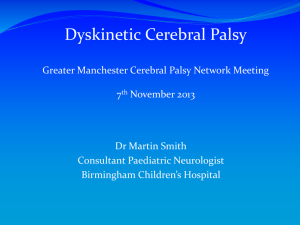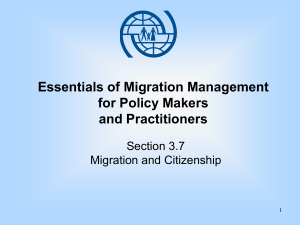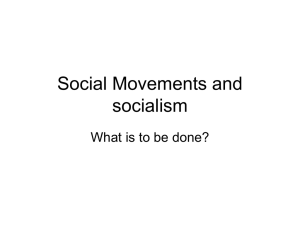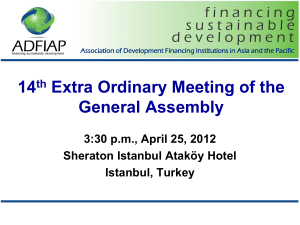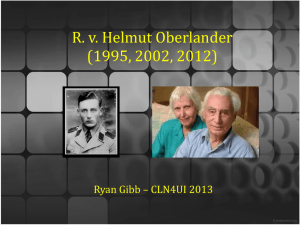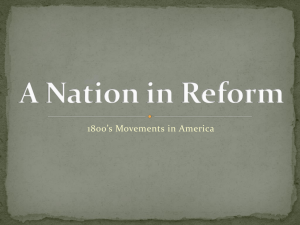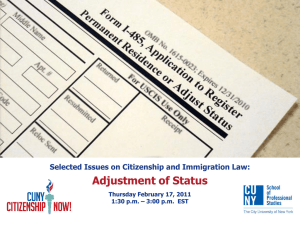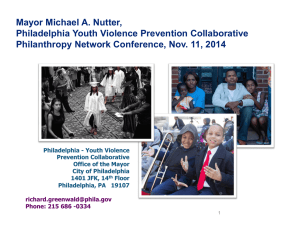The Impact of Contemporary Women`s Movements in Multicultural
advertisement
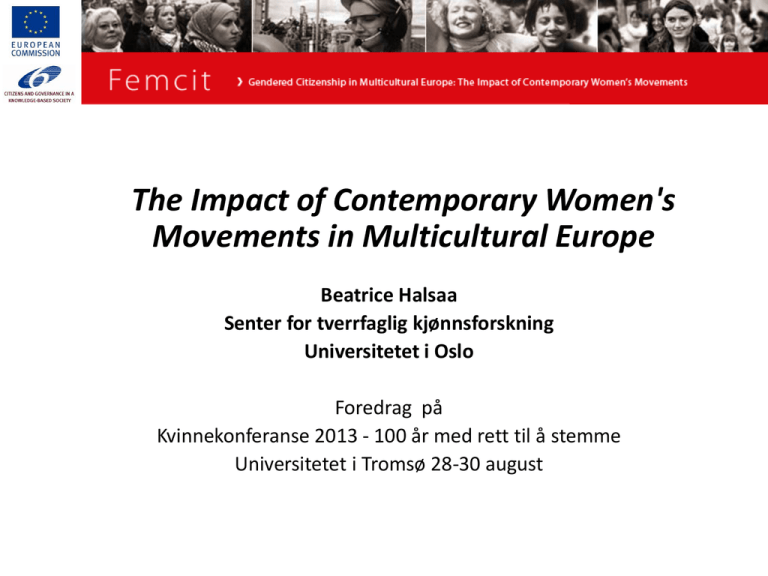
The Impact of Contemporary Women's Movements in Multicultural Europe Beatrice Halsaa Senter for tverrfaglig kjønnsforskning Universitetet i Oslo Foredrag på Kvinnekonferanse 2013 - 100 år med rett til å stemme Universitetet i Tromsø 28-30 august The FEMCIT project 2007-1011: www.femcit.org financed by the EU 40 researchers comprehensive research in 13 European states, covering the North, East, West and South covering the period from the late 1960s Modest statements: But there is no indication that as yet, despite its enormous growth, the organized women’s liberation movement can claim more than nuisance value Women’s liberation movement is, in concept and organization, the most public revolutionary movement ever to have existed. It is able to make the most revolutionary statements in public without anyone seeming bothered Juliet Mitchell (1973): Women’s Estate The impact of women’s movements: • underresearched • challenging: • women’s movements change, and do not have porous borders, • women’s movements are not the only actors, thus • impact cannot easily be separated from the impact of other social movements, of media, public policies etc. • it matters if you assess short or long-time impact, and • movement impact is related to political opportunities, timing, and last but not least specific issue. Impact on everyday life and women’s self-esteem matters. Virginia Woolf in A Room of One’s Own: "Women have served all these centuries as lookingglasses possessing the magic and delicious power of reflecting the figure of man at twice its natural size. (…) That serves to explain in part the necessity that women so often are to men. (…) How is he to go on giving judgement, civilizing natives, making laws, writing books, dressing up and speechifying at banquets, unless he can see himself at breakfast and at dinner at least twice the size he really is?" Women’s movements are underresearched Runa Haukaa, author of «Bak slagordene», about the new women’s movement in Norway, from 1982. The first and only comprehensive discussion of the «new» movement until 2013 Foto: Nina S. Strand, (Kampdager, KILDEN) Hilde Danielsen (red.) 2013 (When the personal became poltical. The new women- and men’s movement in the 1970’s) FEMCIT: Gendered Citizenship in Multicultural Europe: The Impact of Contemporary Women’s Movements 2007-2011 comprehensive comparative research Demands, practices and impact of women’s movements activism 6 dimensions of citizenship: intimate, bodily, multicultural, social, economic and political 21 sub-projects on selected feminist issues ethnicity/racialization as a crosscutting issue Remaking Citizenship: New understandings, overall assessments, policy input and recommendations Cross citizenship dimension analysis: Reconsidering core concepts, sensitising questions, close cross-WP readings,. Women’s movements, gender and diversity as common threads Political Citizenship Issues: - quotas - being repr. -female repr. Cases: Macedonia Poland Sweden UK Social Citizenship: Economic Citizenship Ethnic and Religious Citizenship Bodily and Sexual Citizenship Issues: - child care - parental leave Issues: - employment - elderly care Issues: - violence - faith Issues: - abortion - prostitution Cases: Czech Rep. Finland Norway Spain Cases: France Norway Poland Cases Norway Spain UK Cases: Czech Rep. Netherlands Portugal Sweden Intimate Citizenship: Issues: -partnership - repr. rights - sexual identities - sexual violence Cases: Bulgaria Norway Portugal UK Contemporary Women’s movements: Citizenship claims and practices Example: violence against women Examples of critical acts: • Shelters for women • Crimes against Women: International Tribunal in Brussels, 1976 • 1981 Activists mark Nov. 25 Examples of impact: • 1993 UN Declaration to Eliminate Violence against Women • 1997 EWL Observatory on Violence against Women • 1999 UN declares Nov. 25 International Day against Violence against Women Example from Spain: Law 1/2004 on Comprehensive Protection Measures against Gender Violence Result of the feminist movement’s efforts since 1993 A 'pioneering' law: • defines gender violence as a problem of gender inequality: 'the most brutal symbol of gender inequality' (the Preamble), defined as result of patriarchal structures, • direct consequence of unequal power relationships between men and women • Special Courts for the hearing of cases of VAW, and a special prosecutor for crimes against women Impact on law and policy – a continuum: Access impact: new voices are being listened to: YES Agenda impact: new demands on the political agenda; YES Policy impact: adoption of legislation or policy in line with demands; YES Output impact: measures to ensure the new legislation – ?? Full impact: when/ if the underlying hardships are removed or lessened - NO FEMCIT has explored – women’s movements mobilisation and organizations – women’s movements claims and frames – women’s movements impact/ resonance/ transformations • for individual citizens; civil society, policy-making • on selected issues in selected countries FEMCIT opening conference FEMCIT PhD course in Prague Bodily citizenship: prostitution Bodily citizenship Abortion rights advocates gather in Smith Park in Jackson, Mississippi, to rally support for a woman's right to an abortion, Saturday, July 15, 2006. (AP Photo/Rogelio V. Solis) Economic citizenship • a core demand of feminist movements – • this demand has obviously been influential • Western democracies have aligned themselves to the normative models of women’s economic citizenship that were prevalent in many of the ex-Soviet countries prior to 1989 Measures to reduce the “double burden” that limits women’s access to full economic citizenship have been largely predicated on the “activation” of women workers through the “commodification” of care services to households with (elderly) care needs. - the family 'going public' (Hernes, 1987:135) A “win-win” scenario of the “de-gendered” universal citizen worker paradigm? Or producing new forms of segregation between “minoritized” and “majoritized” women on the labour market? In all of the countries studied in FEMCIT economic citizenship group (France, Poland, Norway), migrant and “minoritized” social groups face a series of obstacles in gaining access to economic citizenship rights on the same basis as majority groups Intimate citizenship • Gay pride, Oslo 2013 • Lesbian mothers’ section Minority ethnic women – indigenous, Roma, migrant women Social citizenship From an art exhibition, Holsmbu, Norway Political citizenship The legacy of women’s movements: • Transformations of culture; everyday life – new norms and practices of mothering, parenting, intimacy – new notions and cultural expressions • Access for women - procedural changes – access to employment, to political and religious institutions, education etc. • Policy changes - substantive changes – gender equality policies, mainstreaming, quotas, abortion on demand, gender research etc.
